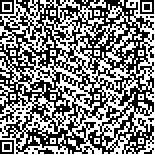刘颖,李魁星,杜晓娟,赵宏,陈丽霞.血友病儿童关节健康状况及其影响因素分析[J].中华物理医学与康复杂志,2017,39(10):776-779
扫码阅读全文

|
| 血友病儿童关节健康状况及其影响因素分析 |
| Factors influencing the joint health of haemophilic children |
| |
| DOI: |
| 中文关键词: 血友病 关节健康 儿童 |
| 英文关键词: Haemophilia Joint health Children |
| 基金项目: |
|
| 摘要点击次数: 5640 |
| 全文下载次数: 6580 |
| 中文摘要: |
| 目的 探讨血友病儿童关节健康状况及其影响因素。 方法 选取来自北京协和医院血友病门诊的4~18岁男性血友病患者60例,按年龄大小分为幼儿组(5~7岁,16例)、儿童组(8~12岁,18例)和少年组(13~18岁,26例),患儿的平均年龄(11.10±4.08)岁。采用血友病关节健康评估表(HJHS)评价血友病患儿双肘、双膝和双踝关节的健康状况,计算各关节的HJHS评分,并用Spearman法对血友病患儿关节健康状况的影响因素进行相关性分析。 结果 60例患儿双膝、双肘、双踝关节的HJHS评分分别为(8.65±6.41)、(5.30±5.30)和(5.40±4.25)分,膝关节评分明显高于肘关节和踝关节评分(P<0.05)。幼儿组患儿的肘关节评分明显低于同龄患儿的膝关节评分(P<0.05),膝关节评分略高于踝关节评分,但差异无统计学意义(P>0.05);少年组患儿的膝关节评分明显高于同龄患儿的肘关节评分和踝关节评分,差异均有统计学意义(P<0.05);但儿童组患儿的各关节评分之间比较,差异均无统计学意义(P>0.05)。相关性研究显示,HJHS评分与患儿年龄呈明显正相关(P<0.05),Spearman系数r为0.592;与平均治疗剂量及合理锻炼情况呈明显负相关(P<0.05)。 结论 血友病患儿关节健康状况随年龄增加而减退,以膝关节尤甚;患儿接受充足剂量的凝血因子替代治疗以及合理的体育锻炼将有助于改善其关节健康状况。 |
| 英文摘要: |
| Objective To explore the joint health of children with haemophilia and its influencing factors. Methods Sixty boys with haemophilia (aged 4-18 years) were recruited from Peking Union Medical College Hospital. They were divided by age into a five to seven year-old group (group A, n=16), an eight to twelve year-old group (group B, n=18) and a thirteen to eighteen year-old group (group C, n=26). The haemophilia joint health score (HJHS) (version 2.1) was used to evaluate the condition of their elbows, knees and ankles. Spearman′s method was applied to analyze the influencing factors. Results The average HJHSs of the knees, elbows and ankles of all of subjects were 8.65±6.41, 5.30±5.30, and 5.40±4.25 respectively. The average for the knees was significantly higher than for the elbows and ankles. The average HJHS for the elbows of group A was significantly lower than that of their knees. The average HJHS for their knees was not significantly different from that of their ankles. For those aged 13-18 years, the average HJHS for their knees was significantly higher than that for their elbows and ankles. There was no significant difference between the HJHSs for the elbows, knees and ankles of the 8-12 year-olds. The HJHSs were positively correlated with age but negatively correlated with average therapeutic dose and exercise. Conclusion The joint health of haemophilic boys, especially that of the knees, decreases with age. Their joint health can be improved by medication and by taking reasonable physical exercise. |
|
查看全文
查看/发表评论 下载PDF阅读器 |
| 关闭 |
|
|
|